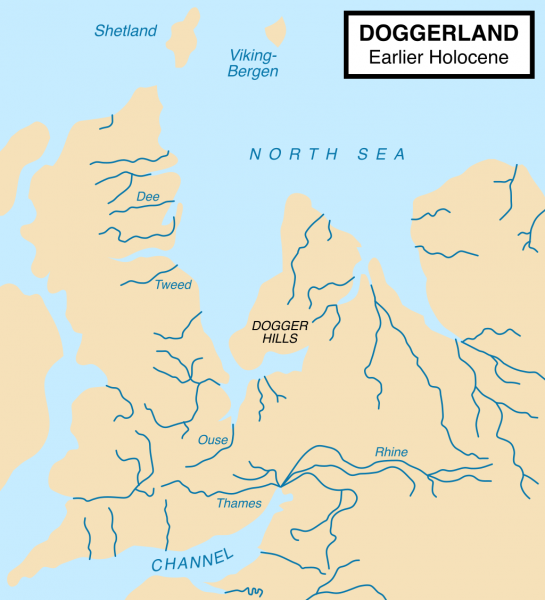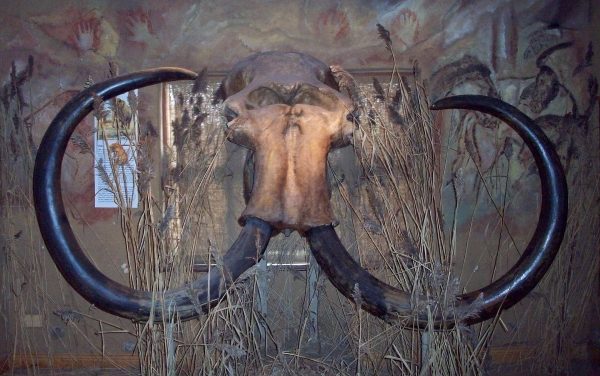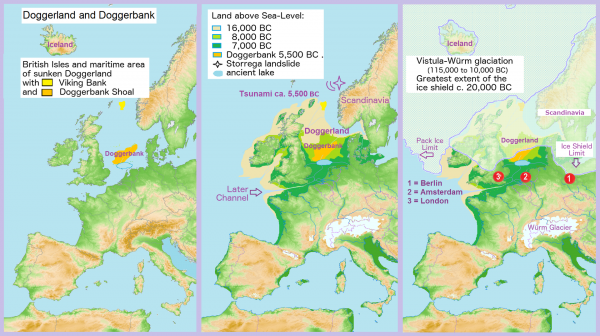New evidence Shows Tsunami 8000 Years Ago Swept Away Doggerland that Linked UK to Europe
Doggerland: About eight to nine thousand years ago the Storegga Slides, a series of landslides that occurred about sixty miles off Norway’s More Coast which is on the edge of Europe’s continental shelf, left a huge one thousand mile long scar on the floor of the sea.
It was discovered in 1983 and geologists named it the largest area of slope failure in the world.
The entire scar is about the size of Scotland. It is also believed that the tsunamis that occurred as a result destroyed a land bridge, Doggerland, that attached the island of Great Britain with the continent of Europe.

There are many learned hypothesis as to the events that took place with some believing that a single event caused the landslides while others contend the scar is the result of at least three moderate-sized tsunami-producing landslides that occurred between five to six thousand years ago.
Sand deposits associated with the tsunamis have been found along the coast of eastern Scotland, parts of England’s northwestern coast, the Orkney Islands and the Shetland Isles as well as the Faroe Islands, Iceland and Norway.
Some project that the wave exceeded eighty feet in the Shetland Islands and sixteen feet in eastern Scotland. Some scientists believe several undersea earthquakes caused the slides while others say the rapid release of methane gas trapped as gas in seafloor sediments was to blame.
According to heritagedaily.com, in 1931 a trawler hauled up a lump of peat while fishing near the Ower Bank, twenty five miles off the English coast.

It contained an ornate barbed antler point used for harpooning fish that dated from about 10,000 to about 4,000 BC. Since then artifacts such as textile fragments, paddles and Mesolithic dwellings have been found off the coast of Denmark and settlements, dugout canoes human burials and fish traps have been discovered in the Rhine/Meuse delta of the Netherlands. In 2015 divers found the remains of compressed trees and branches indicating it was once a prehistoric forest off the coast of Norfolk.
Doggerland was the home of Mesolithic people, nomadic hunter-gatherers who followed the seasons to obtain food through fishing, hunting and collection of edible berries and nuts.
At the end of the last ice age when sea levels began to rise Doggerland, over time, began flooding and the inhabitants were forced to higher ground in England and the Netherlands. Even today, ancient tools and bones are brought up from the seabed by fishermen.
At one time people could walk from London to Amsterdam crossing the present day North Sea by way of Doggerland. National geographic.org tells us that at the time of Doggerland’s flooding sea level was rising three to six feet every one hundred years.

Professor Vince Gaffney from the University of Bradford remarked, “Exploring Doggerland, the lost landscape underneath the North Sea, is one of the last great archaeological challenges in Europe…this work demonstrates that an interdisciplinary team of archaeologists and scientists can bring this landscape back to life and even throw new light on one of prehistory’s great natural disasters, the Storegga Tsunami.”
Gaffney and his colleagues whose research paper can be found at mdpi.com, maintain that Doggerland was already beginning to flood and the Storegga Event put it completely underwater.
Knut Rydgren and Stein Bondevik of Faculty of Engineering and Science, Sogn og Fjordane University College, wrote a paper in 2015 describing how they believe that the event occurred at the end of autumn when the inhabitants of Doggerland had come down from the cooler mountains to settle in for the winter.
Those that survived the tsunami would have been greatly disadvantaged and forced to move north with no winter provisions.
Another Article From Us: 2300-Year-Old Scythian Woman’s Boot Preserved in the Frozen Ground
Scientist say that with the current climate change another Storegga Event is entirely possible putting more than one billion people who live along the coastlines at risk.





